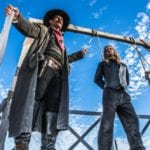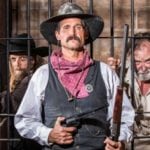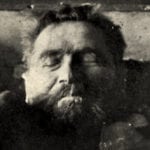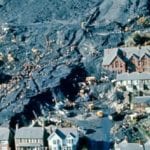 Weird Stuff
Weird Stuff  Weird Stuff
Weird Stuff  Health
Health 10 Ancient Prosthetics That Deserve a Hand
 History
History 10 Tragic and Shocking Facts about the White Ship Disaster
 Our World
Our World 10 Bizarre Scientific Theories That Experts Are Seriously Considering
 Travel
Travel Ten Tiny Kansas Towns with Strange Claims to Fame
 Miscellaneous
Miscellaneous 10 Intriguing Origins of Popular Sayings
 Facts
Facts 10 Little Known Facts about the Rubik’s Cube
 The Arts
The Arts Top 10 Iconic Musicals That Got Horrible Reviews
 Misconceptions
Misconceptions Ten Unexpected Truths About How Pirates Really Lived
 Health
Health 10 Most Outrageous Workout Trends
 Weird Stuff
Weird Stuff Top 10 Weirdest Attractions at Coney Island
 Health
Health 10 Ancient Prosthetics That Deserve a Hand
 History
History 10 Tragic and Shocking Facts about the White Ship Disaster
Who's Behind Listverse?

Jamie Frater
Head Editor
Jamie founded Listverse due to an insatiable desire to share fascinating, obscure, and bizarre facts. He has been a guest speaker on numerous national radio and television stations and is a five time published author.
More About Us Our World
Our World 10 Bizarre Scientific Theories That Experts Are Seriously Considering
 Travel
Travel Ten Tiny Kansas Towns with Strange Claims to Fame
 Miscellaneous
Miscellaneous 10 Intriguing Origins of Popular Sayings
 Facts
Facts 10 Little Known Facts about the Rubik’s Cube
 The Arts
The Arts Top 10 Iconic Musicals That Got Horrible Reviews
 Misconceptions
Misconceptions Ten Unexpected Truths About How Pirates Really Lived
 Health
Health 10 Most Outrageous Workout Trends
10 Forgotten Tales From The Wild, Wild North-West Of Canada
The United States wasn’t the only untamed frontier. Just to the north was another Wild West: the vast, cold, unsettled lands of Canada.
The frontier days of the Great White North have never held the mythic status of the American frontier. They were emptier lands, filled, for the most part, with fur traders and First Nations tribes, kept on a tighter leash than the wild settlers across the border.
But as the Americans to the south started to expand further west, and as they began to be lured up north in pursuit of gold rushes, the Canadian West started to become every bit as wild as its neighbor. It turned into a place where liquor, theft, and murder ran rampant—and nothing but a handful of mounted policemen stood between civilization and complete anarchy.
10 The Fraser Canyon War
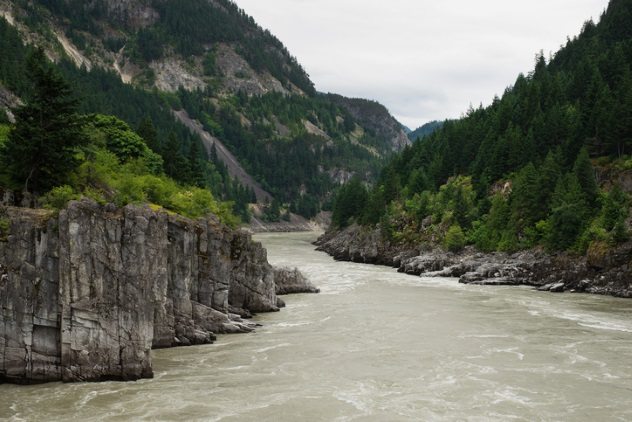
In the Canadian West, trouble usually traveled in from down south. In 1858, a mob of American prospectors surged into Fraser Canyon, desperate for their chance at gold. A few got rich, but the whole lot of them very nearly got themselves killed.
It started when a group of French miners grabbed and violently raped a woman from the local Nlaka’pamux tribe.[1] The tribe was already uneasy about the new flux of white men into their land, and this set them over the edge. They caught the men who’d raped her, chopped off their heads, and, as a warning to the others, sent their mutilated bodies downriver to drift into the town where the prospectors lived.
The Americans were terrified, and they wanted blood. Some called for war, forming gangs that promised to “kill every man, woman and child they saw that had Indian blood in them”—which suited the Nlaka’pamux just fine. In their camp, the war chief was calling on his men to “make a clean sweep of the whole body of miners.”
Battles broke out across the island. When the Nlaka’pamux killed, they would send the mutilated bodies of their victims downriver. Soon, it became a common sight to see a headless body drifting downstream anywhere a man walked.
Things only calmed down when Governor James Douglas led a small army into the Nlaka’pamux camp and convinced them to make peace with the Americans. But it wasn’t easily done. The Nlaka’pamux only agreed because Douglas promised that, if they didn’t, he would send in the Canadian army to kill every last one of them.
9 The Cypress Hills Massacre
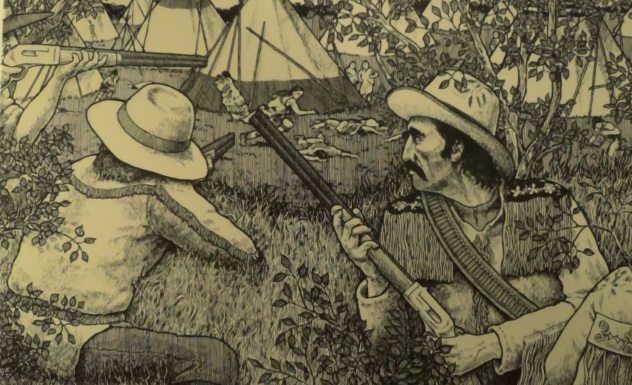
On a spring morning in 1873, a group of fighters from Alberta’s Piikani tribe rode down south of the border and into Idaho, looking for nothing but trouble. They found it in a group of American wolf pelt hunters. The Piikani men threatened them, stole their horses, and took them back to their camp.
They were sure the Americans would never pursue them across the border—but the Americans weren’t about to let their horses go. They gathered up a posse and rode into Canada in pursuit, looking for blood.
They soon made it to Cypress Hills, where they found a native camp. These weren’t the men who’d robbed them—they were peaceful people from the Assiniboine tribe—but to the Americans, every Indian looked the same. The posse came on them with guns cocked and loaded, determined to burn the natives out. The Assiniboine tried to take cover, but the Americans thought they were getting ready to fight and opened fire.
They made the chief watch as they jammed a hatchet into his father’s skull. Then they cut the chief’s head off and mounted it on a pole. By the time they were done, they’d killed 22 innocent people.[2] Only three of the dead were men. All the rest were women and children.
8 Fort Whoop-Up

After the Cypress Hills Massacre, the Canadian government knew they had to do something to keep the Americans in line. They formed a police force and sent them out on a long march west. They were called the North-West Mounted Police—or, as they’re better known today, the Mounties.
Their first target was Fort Whoop-Up, a trading post where two Americans were making a small fortune by illegally selling whiskey and weapons to natives in the Blackfoot Confederation. Their trademark drink was called bug juice, a liquor spiked with ginger, molasses, red peppers, and chewing tobacco, and the Blackfoot would trade everything they had for it.[3]
“The whiskey brought among us by the traders is fast killing us off,” the Blackfoot chief Crowfoot complained. His people were giving away their food and clothes to get drunk, and they didn’t know how to handle it. Blackfoot men had murdered each other at Fort Whoop-Up, carried away by the booze. Crowfoot had relocated his tribe to get them to stop drinking, but whiskey runners would follow them wherever they went, knowing that, whether Crowfoot liked it or not, his people were loyal customers.
Ultimately, nothing ever happened to the men who ran Fort Whoop-Up. When the Mounted Police arrived, they just threw out the whiskey, and, without evidence, the whiskey runners couldn’t be stopped. The two Americans died free and wealthy beyond most people’s wildest dreams.
7 Jerry Potts
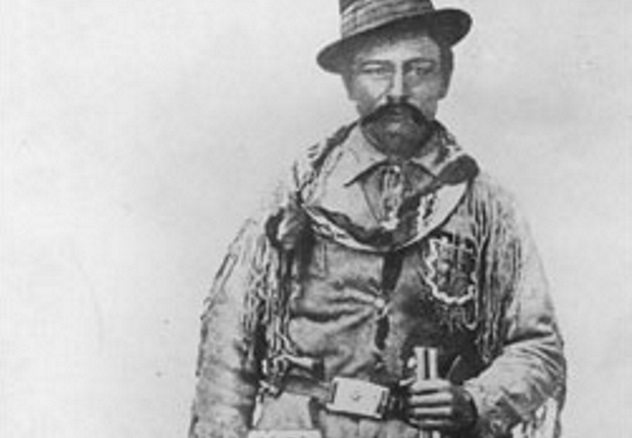
The men who’d founded Fort Whoop-Up didn’t get there on their own. They were helped by a guide: the half–Black Elk, half-Scottish scout Jerry Potts. He got them started—and after their whiskey started destroying his life, he became their worst nightmare.
Potts was a child when he killed his first man. His victim was the man who’d killed his father: a Piikani warrior who’d left him an orphan. It filled Potts with hate, and when he was 16 years old, he hunted the Piikani man down and killed him.[4]
He saw the effect of Fort Whoop-Up firsthand shortly after he helped set it up. A man in his tribe called Good Young Man got drunk on bug juice and, in a drunken rage, murdered his mother and his brother.
Potts, once more, dedicated himself to revenge. He spent the next year tracking down Good Young Man. As soon as Good Young Man saw Potts approaching, he tried to flee on horseback, but Potts shot him off his horse, killing him. From then on, Potts hunted whiskey runners.
At first, he would track them down and kill them. When the Mounted Police came in, Potts joined them and worked as their guide. But by then, he’d already killed 40 people, nearly every one a whiskey runner.
6 The McLean Gang
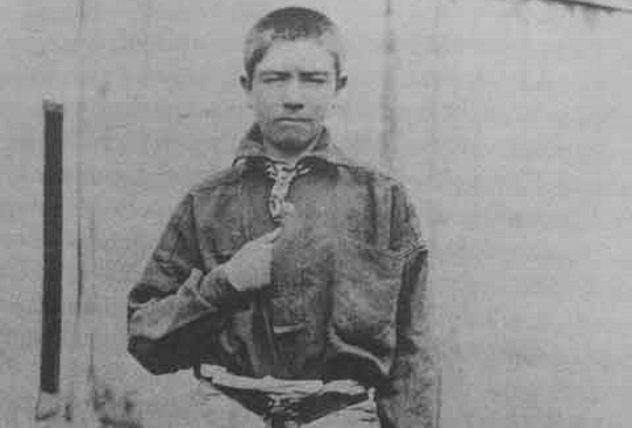
The McLean Gang had gotten cocky in 1879. They were four teenagers who thought they couldn’t be touched by the law. They lived out in Fort Kamloops, British Columbia, where they hardly ever saw a police officer. The boys would steal horses and ride through town, bragging about what they’d done, sure they were untouchable.
But a man named Johnny Ussher was determined to set them straight. He put together a posse, rode out to the McLeans’ home, and demanded they turn themselves in.
The McLean boys responded with a hail of bullets, but Ussher was sure they were just trying to scare the posse. The boys were thieves, not murderers, he thought. So he got off his horse, walked right up to them, and told them to put down their guns and come quietly.
The boys knocked him down and kicked him while one shouted, “Kill the son-of-a-b—ch!” When nobody else did it, the youngest of the group, 15-year-old Archie McLean (pictured above), pulled out his revolver and shot Ussher.
The other boys got the bloodlust after that. They filled Ussher’s body with bullets, mutilated him, and rode into town and showed off his bloodstained clothes. If anyone came for them, they declared, they’d be next to die.
Another group did come—but this time, there were 75 of them, and they were armed to the teeth. The McLean boys were brought in and hanged. The judge, ordering their deaths, declared the boys had “not one single redeeming feature.”[5]
5 Bill Miner: The Gentleman Bandit
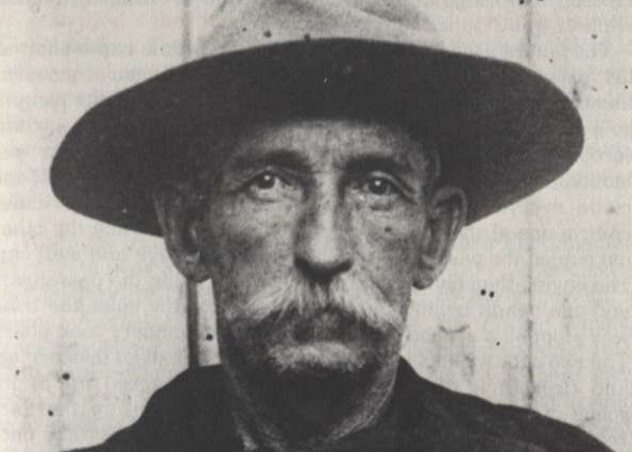
Bill Miner was born in Kentucky, but he didn’t stay there for long. He went out west and became an outlaw. Then, after a long stint in San Quentin prison, he moved on north, hoping criminal business would be easier in the Canadian West.
They called him the “Gentleman Bandit” because of the polite courtesy he’d use when he was holding a gun to people’s heads.[6] He was a man of firsts. It’s said he was the first to yell “Hands up!” during a robbery, and he was the first man to hijack a Canadian train.
The first train he robbed won him $7,000 in gold. At the time, that was enough of a fortune to live comfortably for two years. When the money ran out, though, he tried to pull off the trick again in 1905—and this time, it didn’t go as well.
The second train he robbed had nothing in but mail and old newspapers. Trying to make the best of a bad situation, Miner grabbed $15 and a bottle of liver pills and then ran for his life. He didn’t get far. The Mounted Police tracked him down, shot one of his cohorts in the leg, and brought Miner in. The Gentlemen Bandit was behind bars. He’d risked it all and lost it for $15 in cash.
Miner later escaped prison and fled to the US.
4 Sam Kelly And The Nelson-Jones Gang
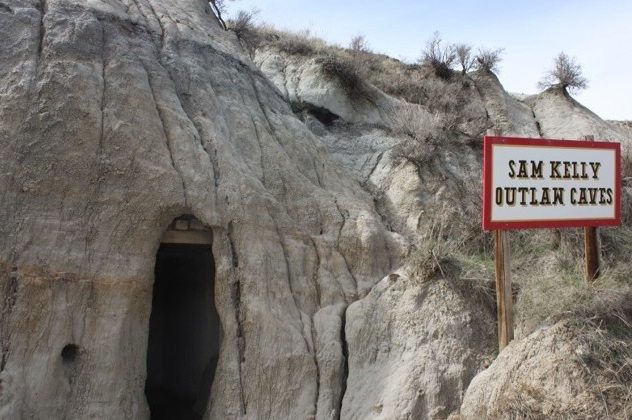
When Sam Kelly and his gang terrorized a town, you had to catch them quick. As soon they’d appeared, the boys would disappear into the Big Muddy Badlands of Saskatchewan: a place full of caves, cliffs, and gullies. In a second, Kelly and his men would disappear into a winding network of tunnels and vanish.
Kelly started his criminal career with a trek down to Montana, where some old friends were being held in prison. With a copy of the jailhouse key given to him by the town’s corrupt deputy sheriff, Kelly was able to walk right into the prison and leave with the prisoners. He even tipped his hat to the sheriff’s wife as he walked out with two convicted felons.[7]
From then on, Kelly was a career criminal. He would steal horses and cattle from Saskatchewan farms or sometimes move south of the border and hijack a train full of gold. He caused so much havoc that the Mounted Police set up a fort in the Big Muddy Badlands to try to stop him, but he disappeared every time.
After years of crime, Kelly had a change of heart. He walked into the police station and turned himself in. Kelly, though, had been so careful that they didn’t have enough evidence to convict him in of a single crime. Even though he’d brought himself in, they had to set him free.
3 James Gaddy And Moise Racette
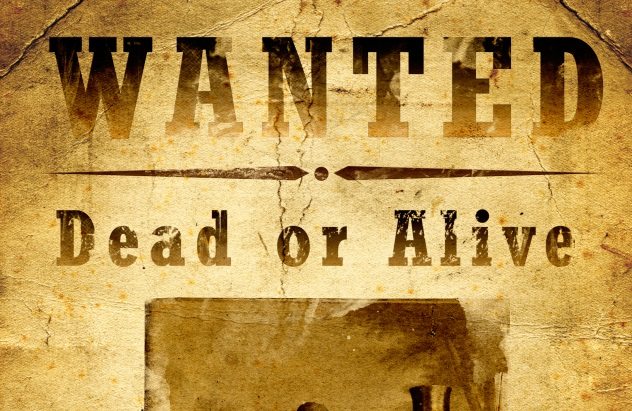
In 1887, James Gaddy and Moise Racette met in a bar in Saskatoon. Bonding over a few beers and a mutual love of ill-begotten goods, the boys made a pact to become horse thieves. They even got a photograph taken together to commemorate the occasion.
They celebrated by stealing a horse from a man named Hector McLeish, but McLeish, they soon learned, wasn’t a good person to cross. He formed a posse and went out looking for the boys, determined to bring them to justice.
It didn’t take long before McLeish and a friend, Constable Mathewson, found the boys’ home. They sent word to the rest of the posse. The plan was to wait for backup before doing anything rash—but when they saw Racette saddling his stolen horse like he was getting ready to leave, the men jumped into action on their own.
What they didn’t know was that Racette’s father was in the house, too. When he saw his son getting arrested, the elder Racette snuck out the back door and jumped Mathewson from behind, knocking his gun out of his hand.[8]
McLeish tried to get Racette off, but Gaddy grabbed the pistol and shot him three times. The boys, now murderers, ran for the lives, but they forgot about one thing: that photograph they’d taken at the bar. The photographer had kept a copy, and by the next day, their faces were all over the country with a $500 bounty on their heads. The two were hanged in 1888.
2 Harry Wagner: The Flying Dutchman
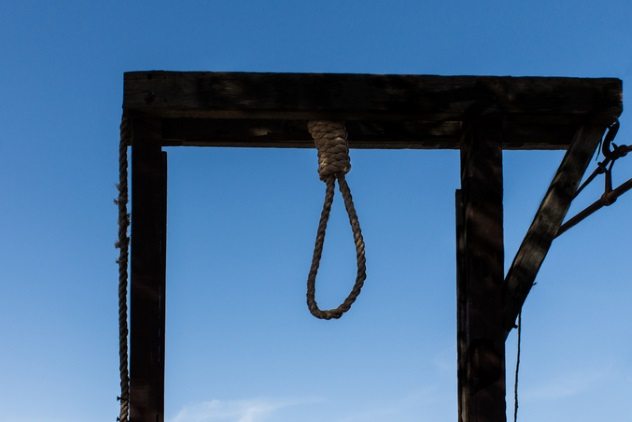
Harry Wagner was a member of Butch Cassidy’s gang, but after Cassidy was taken in, he stole a ship and moved up north. He terrorized the bays of British Columbia, plundering them on a boat so quick and silent that it won him the nickname “the Flying Dutchman.”
Wagner, though, met his end one day in 1913 while robbing a general store. Two constables saw the light on in the window and went in, catching Wagner and his men in the act. A gunfight broke out. Wagner shot one of the constables and bit off the other’s thumb, but the last standing constable brought him down.
The officer soon realized he hadn’t just caught a petty crook—he’d caught an international criminal. Wagner’s gang was hunted down, and Wagner was sent to prison, where he met a crude end.
Before Wagner was hanged, the hangman told the crowd, “I’m out to establish a new world record.” He had a constable set his watch, dropped Wagner down as fast as he could, and yelled for the time. The first sound after Wagner breathed his last breath was a crowd applauding as his executioner announced: “Gentlemen, gentlemen! You have been privileged to witness 11 seconds clipped from the record.”[9]
1 The Mad Trapper Of Rat River
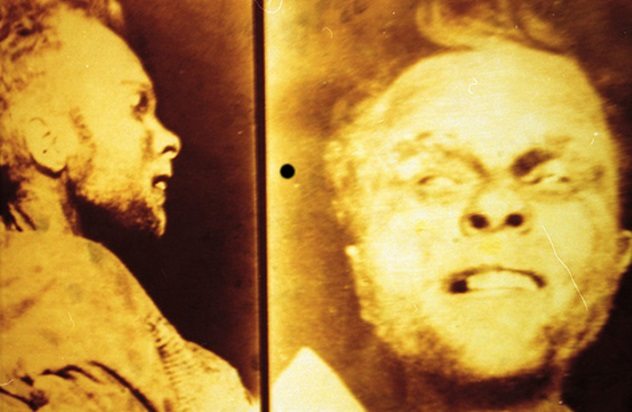
Nobody knows where the Mad Trapper, Albert Johnson, came from. He was a mystery, a man without a past who’d simply shown up in the Yukon one day and started stealing furs from trappers.
After a few complaints had come in, an RCMP officer went to Johnson’s cabin to ask him questions. Johnson, though, didn’t say a single word.[10] He just sat there, staring at the Mountie in a steely silence, no matter what the officer said.
The policeman came back with an arrest warrant, and, again, Johnson didn’t say a single word. This time, he just pulled out his gun and shot the officer.
A posse of Mounties and trappers went after him next. For three days, they fought him in a shootout, even dynamiting his roof off. Johnson somehow survived it all, though, and escaped in the camouflage of a blizzard.
Most figured he’d die in a few days. It was mid-winter and they were north of the Arctic Circle, but Johnson survived. For 48 days, he stayed ahead of the officers chasing him, hiding his tracks by climbing through mountain ranges and traveling with a herd of caribou.
On February 17, 1932, they finally found him at Eagle River, where he fought them off in one last gunfight. It was a final stand. The Mad Trapper died in the Arctic in a blaze of bullets—but not before shooting one more officer before he went down.
Read more about Canada on 10 Badass Canadian War Heroes and 10 Fascinating Facts About Canada.
